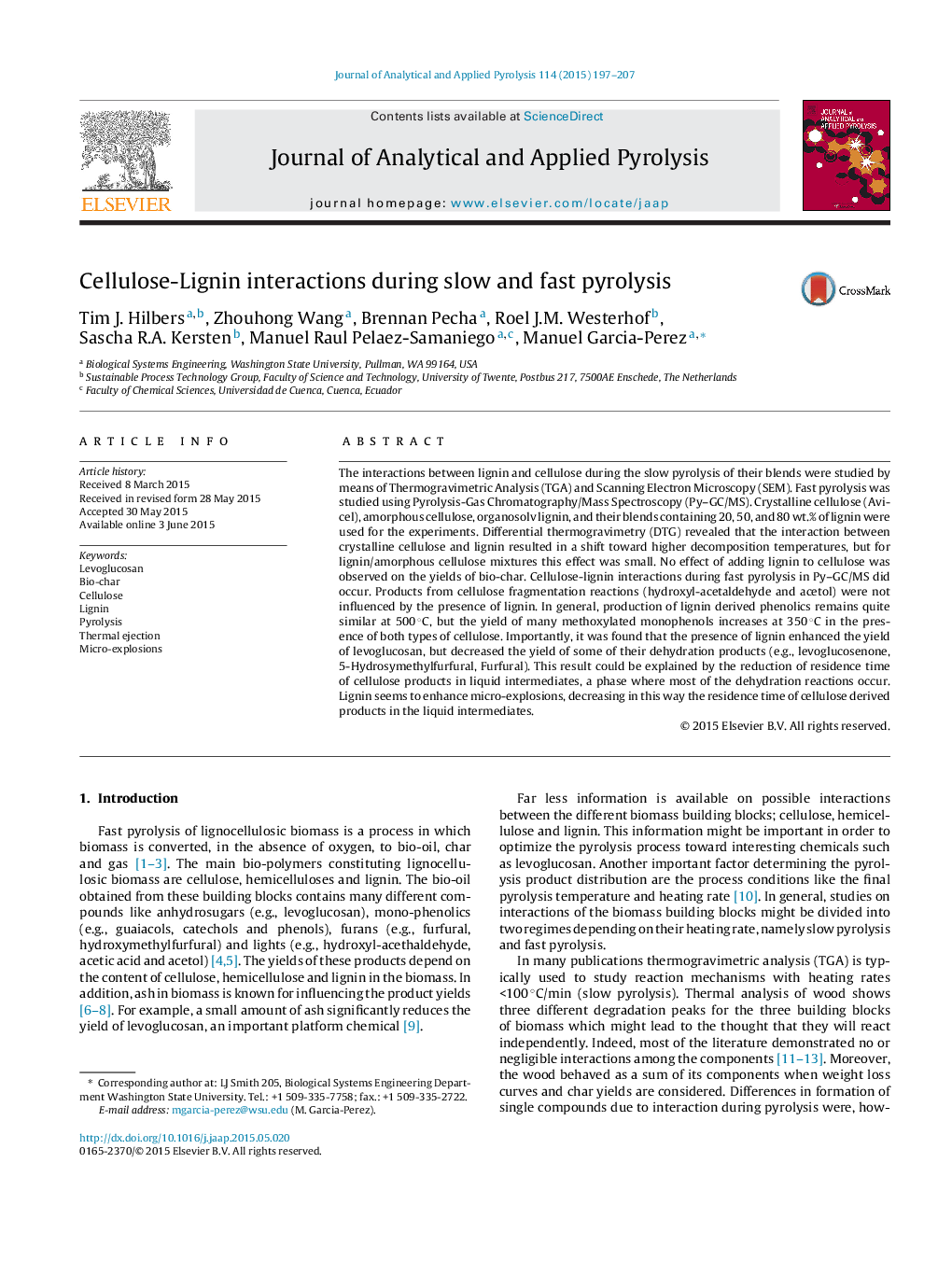| Article ID | Journal | Published Year | Pages | File Type |
|---|---|---|---|---|
| 1196980 | Journal of Analytical and Applied Pyrolysis | 2015 | 11 Pages |
•No effect on the yield of bio-char was observed due to cellulose lignin interactions.•In general the products of cellulose fragmentation reactions and the products from lignin depolymerization were not influenced by the presence of lignin.•The presence of lignin enhanced the yield of levoglucosan, but decreased the yield of some of their dehydration products (levoglucosanone and 5 HMF).•Lignin seems to enhance micro-explosions, decreasing in this way the residence time of cellulose derived products in the liquid intermediates.
The interactions between lignin and cellulose during the slow pyrolysis of their blends were studied by means of Thermogravimetric Analysis (TGA) and Scanning Electron Microscopy (SEM). Fast pyrolysis was studied using Pyrolysis-Gas Chromatography/Mass Spectroscopy (Py–GC/MS). Crystalline cellulose (Avicel), amorphous cellulose, organosolv lignin, and their blends containing 20, 50, and 80 wt.% of lignin were used for the experiments. Differential thermogravimetry (DTG) revealed that the interaction between crystalline cellulose and lignin resulted in a shift toward higher decomposition temperatures, but for lignin/amorphous cellulose mixtures this effect was small. No effect of adding lignin to cellulose was observed on the yields of bio-char. Cellulose-lignin interactions during fast pyrolysis in Py–GC/MS did occur. Products from cellulose fragmentation reactions (hydroxyl-acetaldehyde and acetol) were not influenced by the presence of lignin. In general, production of lignin derived phenolics remains quite similar at 500 °C, but the yield of many methoxylated monophenols increases at 350 °C in the presence of both types of cellulose. Importantly, it was found that the presence of lignin enhanced the yield of levoglucosan, but decreased the yield of some of their dehydration products (e.g., levoglucosenone, 5-Hydrosymethylfurfural, Furfural). This result could be explained by the reduction of residence time of cellulose products in liquid intermediates, a phase where most of the dehydration reactions occur. Lignin seems to enhance micro-explosions, decreasing in this way the residence time of cellulose derived products in the liquid intermediates.
